Controlling energy costs on the farm is one way to reduce input costs. But turning off lights when a space isn’t being used just isn’t enough to make a big change in that monthly power bill.
Grand Valley Farms in Rives Junction, Michigan, wanted to see a real change in their energy management program and ultimately the monthly check written to the electric and gas companies. Through the USDA REAP program and Michigan initiatives with in-state power companies, Jim Surbrook was able to cut his energy use by as much as 50 percent by upgrading high energy-consuming components of the farm business.
Surbrook farms in partnership with his father and grandfather on a 700-acre dairy farm where they raise corn, soybeans, wheat and alfalfa. The business is seven generations deep at its Jackson County location.
After an energy audit by Dan Schrauben of Schrauben LLC, Surbrook decided on a four-pronged approach to change the farm’s energy consumption patterns over five years: a solar-thermal water heating system to heat water in the milk house, switching from traveler to low-pressure center pivot irrigation systems, replacing florescent lights with LED lights throughout the farm and installing an energy-efficient grain drying system.
It takes money to make money, and tackling the farm’s energy costs was no different. Funding also took a four-pronged approach through a USDA REAP grant, a grant from the Michigan Agency for Energy, rebates from energy service providers and financing through Greenstone Farm Credit Services.
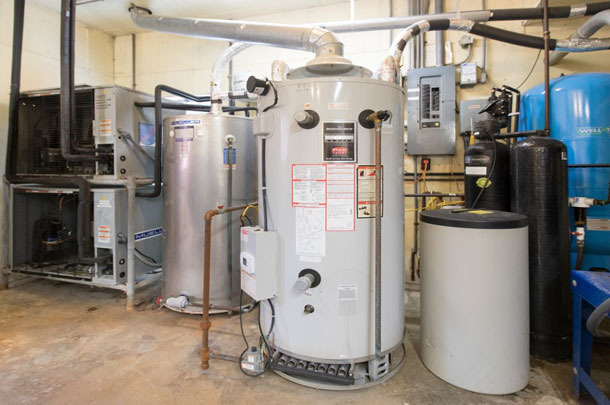
Solar-thermal panels
Six solar-thermal panels were installed on the roof peak above the milking parlor in two arrays. The configuration was chosen so that nearby upright silos wouldn’t shade all panels at any given time. The panels face south and are at a 50-degree angle to shed snow and collect maximum sunlight. A photoelectric array on each panel set pumps water through the panels for heating.
Groundwater is partially heated in a preheater, sent to the solar panels for further heating and returned to a 120-gallon storage tank attached to the hot water heater, which brings the water up to 180°F. Controls allow water to bypass the solar system if needed, and data is collected on water temperatures pre and posttreatment through the panels.
Prior to installing the solar-thermal panels, Surbrook had to upgrade current equipment to capture energy savings benefits. He replaced the free heater, installed a new energy-efficient hot water heater and a new plate cooler. After compiling data for a year, these three upgrades alone reduced energy use by 30 percent before solar panels were even installed. Surbrook says that the solar-thermal panels added another 20 percent to the energy savings when sunshine was available for 10 to 12 hours per day.
Unfortunately, Michigan’s shortage of full-sun days lengthens the pay-off time on the panels. In retrospect, Surbrook says that mounting the solar-thermal panels on the ground would be a better option than the roof where they compete with silos for sunlight hours. However, the panels save $390 on electric water heating costs per year and $240 per year if using natural gas.
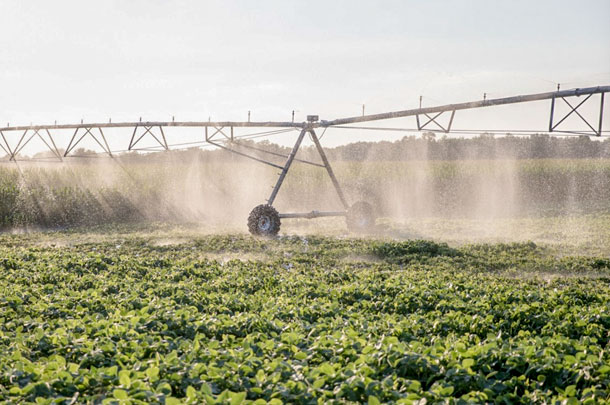
Low-pressure irrigation system
Grand Valley Farms has been irrigating fields since 1975, beginning with a diesel pump, moving to a three-phase electric high-pressure pump system and currently using a three-phase energy-efficient center pivot system. Two pivots cover 240 acres and a soft-hose traveler irrigates 60 acres where power lines dissect the farm.
GPS easily allows water application rate changes and turning off end guns at the touch of a button. Adding a fertigation system is the next consideration to reduce the number of trips over the field.
Before the center pivots, three soft-hose traveler irrigation systems used valuable land space for lanes and required the labor of three people for an entire week to place thousands of feet of aluminum pipe. It required eight hours of operator time during peak use season.
The traveler system ran using two motors of 125 hp and 75 hp each on a three-phase system and could achieve 3/4 inch of water at best using a 120-psi gun. The new pivots use one energy-efficient 75-hp motor on a three-phase system and can apply 1 inch of water with only 40 psi of pressure. The application mimics actual rainfall instead of shooting water out over a 150-foot arch.
Twenty-five percent of the pivot costs were covered through a USDA REAP grant. “I encourage everyone to apply for a REAP grant,” Surbrook says. “It can be used to upgrade equipment to energy-efficient systems and is not just for irrigation, but can be used for grain dryers or other equipment. I encourage you to apply before this funding runs out.”
A 30-bushel per acre yield increase due to the upgraded equipment helped the farm recover its investment two years sooner than planned.
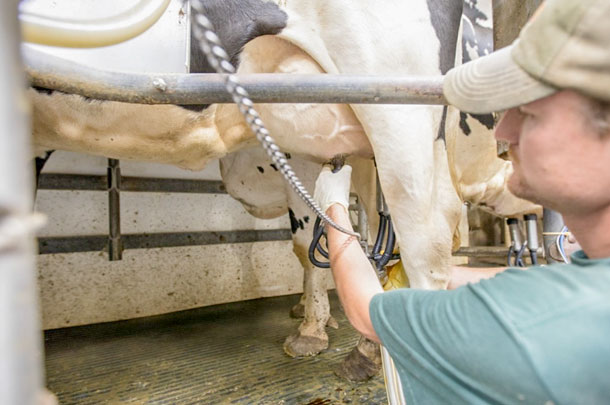
Florescent lights upgraded to LED
Switching from florescent lights to LED was the simplest project but had the most effect on the cows. The old fixtures were converted using new ballasts to save money. “We only changed the lights in half of the parlor first to see how cows would react,” Surbrook says. “We knew right away we were all in with LED lights. The cows entered and exited the parlor more efficiently with the bright, direct light. We cut our milking time, decreased the use of the vacuum pump and decreased our energy use. We can better see the udders, making for quick cleaning and udder prep, and ultimately a better-quality product.”
The calf barn – a retrofitted basement barn – also has new LED lights, replacing CFL and florescent lights, and resulting in an 83 percent energy savings in that barn alone.
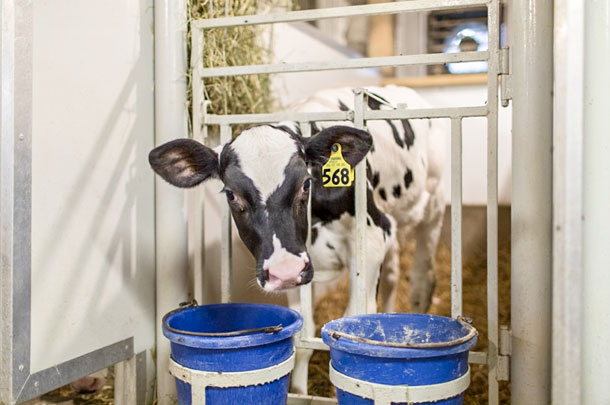
“LED lights do love the cold weather,” he says. “If you’re tired of waiting for florescent lights to turn on in the cold weather, you might want to try out LEDs for yourself.”
Reduced grain drying costs
The final component of the five-year project was to install a new grain dryer system built by R.W. Mercer of Jackson, Michigan. The system stores grain for feeding and occasional market sale. The dryer is GSI’s new Q series single blower design and reduces needed horsepower by almost 50 percent. An added benefit is a similar reduction in noise.
The dryer works in two modes, high heat or hot/cool mode, handling 660 bushels per hour and 330 bushels per hour respectively. Natural gas and a three-phase 480-volt electric motor provide the energy. The dryer works efficiently to decrease drying time, thereby saving energy.
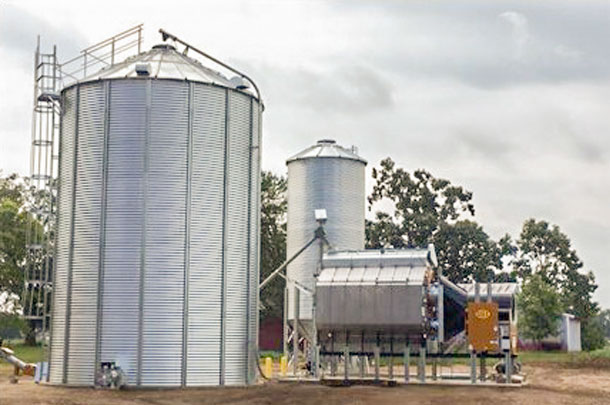
In 2017, drying costs were 1.2 cents per point of moisture or 6 cents per bushel. This was 14 cents per bushel less than the local elevator and half of what they had originally planned.
Charles Gould, agriculture bioenergy and energy conservation educator for Michigan State University Extension, says that dollars for energy-saving equipment upgrades are available through NRCS EQIP programs, but are funneled through separate funds that reduce paperwork requirements.
For a complete listing of energy efficiency incentives offered by your state, visit the DSIRE website. ![]()
Bev Berens is a freelance writer based in Michigan.
PHOTO 1: LED lights in the parlor create a bright and welcoming atmosphere for cows. They enter and exit more efficiently, and the change has reduced milking time. Photo by Rudy Malmquist.
PHOTO 2: Water heating system in the control room at Grand Valley Farms using solar-thermal panels to reduce heating costs. Photo by Rudy Malmquist.
PHOTO 3: The low-pressure center pivot mimics rainfall and has increased yield by 30 bushels per acre. Photo by Rudy Malmquist.
PHOTO 4: LED lights are much brighter than florescent lights, making udder cleaning and prep easier for milkers and ultimately producing a higher quality product. Photo by Rudy Malmquist.
PHOTO 5: LED lights in the calf barn create a bright environment conducive for better observation and monitoring. Photo by Rudy Malmquist.
PHOTO 6: "It's so quiet, you can have a conversation standing next to it without yelling," says Grand Valley Farms owner Jim Surbrook, regarding the Q series drying system installed at the farm. Photo by Truman/Jim Surbrook.






